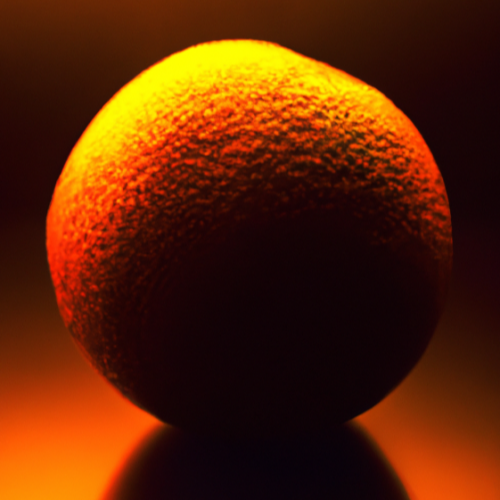

Depends on the currency.


Depends on the currency.


I’m not sure if they’re available with UK plugs, but I’ve got a pack of Thirdreality Zigbee plugs that monitor energy use and have a button on them to toggle power.
I’ve got them connected to Home Assistant. Two do a bit of climate control in a coldroom, the others are for occupancy lighting.


I would like to see a minority of the house representation of elected people from individual regions with term limits, with a majority of the house being regular people randomly selected to serve for a defined amount of time.
Oh yes, I’m not saying don’t season your water. Just that seasoning the water on its own is not a way to prevent pasta sticking.
Yep, I really like how he applies the scientific method to cooking. Some of my favourites are how he’s found the perfect way to boil an egg, cook steaks and roasts (dry brine, reverse sear), and make chocolate chip cookies (he made over 1500 cookies testing how changing each variable changed the final cookie).
It’s not salting your water, nor the water volume to pasta ratio, nor if the water is boiling or not, nor oil in the water, but stirring early in the cooking process that will prevent sticking.
From the great Kenji Lopez-Alt:
Pasta is made up of flour, water, and sometimes eggs. Essentially, it’s composed of starch and protein, and not much else. Now starch molecules come aggregated into large granules that resemble little water balloons. As they get heated in a moist environment, they absorb more and more water until they finally burst, releasing the starch molecules into the water. That’s why pasta always seems to stick together at the beginning of cooking—it’s the starch molecules coming out and acting as a sort of glue, binding the pieces to each other, and to the pot.
…
The problem is that first stage of cooking—the one in which starch molecules first burst and release their starch. With such a high concentration of starch right on the surface of the pasta, sticking is inevitable. However, once the starch gets rinsed away in the water, the problem is completely gone.
So the key is to stir the pasta a few times during the critical first minute or two. After that, whether the pasta is swimming in a hot tub of water or just barely covered as it is here, absolutely no sticking occurs. I was able to clean this pot with a simple rinse.


The asterism gives me big Splinter Cell vibes and I’m definitely OK with that.


That looks nice, yeah prickly with purple flowers is Canada thistle and you don’t want that.


Are the purple flowering weeds really prickly?


The American data is also not fit. A part of a reduction in firearm deaths is advancements in medical treatment for bullet injuries. The actual statistic that should be tracked is bullet injuries, which is also quite incomplete due to many PDs classifying a survived bullet injury as an assault, limiting the ability to get accurate numbers on how many bullet injuries there actually are.


Did he just sue himself?


Aka a bribe.


Also terrified of the same with my 9 month old, but you’re right, my Ioniq also gives a reminder to check the back when the driver door is opened if the rear doors had opened prior to the drive. I hope I won’t need it but it is nice to have.
Unfortunately there isn’t really an all-in-one guide. TechnoTim has info on the Pi-hole config side and wildcard certificates, but I think he uses it with traefik.
NPM is pretty straightforward. If you find a site isn’t working, try turning on Web Socket support.
I’d say just search for guides on each part individually:
I can try to help if you run into any issues.


I’m definitely not a network pro, but it sounds like you’re looking to do something similar to what I have.
I’ve got nginx proxy manager as my reverse proxy with pi-hole for local DNS. All traffic goes through the pi-hole and anything going to mydomain.com has DNS entries pointing to nginx. I’ve set nginx up so service.lan.mydomain.com is for anything local and just service.mydomain.com for anything external with wildcard SSL certs for both (*.domain doesn’t seem to cover *.lan.domain so add certs for both - probably because it’s a sub-subdomain).
The Cloudflare tunnel can then just get directed to service.mydomain.com instead of the IP of the service.


If one tosses something on something else, one would think that the thing that has been tossed is now on the recipient of the tossing.


Alright. You do you.


Unless the feature of the view is nearly straight up from the window, properly designed awnings don’t block the view at all.


Interior shades aren’t nearly as effective as exterior. Once that sun gets through the window, it’s already giving that next interior surface quite a bit of heat.
There are many styles of awning or other shading elements. You can have metal slats or what looks like a wood box that comes out horizontally over the window. I’m sure something could fit your house’s aesthetic. And perhaps ask your wife what value she’d put on thermal comfort.
Looking for shading elements or shading strategies might get broader results than simply sheet metal or fabric awnings.
This is quite important with Immich. They’re good at documenting their breaking changes, just gotta make sure you check the changelog before updating. Also best to avoid auto updating with Watchtower or similar to avoid surprises.